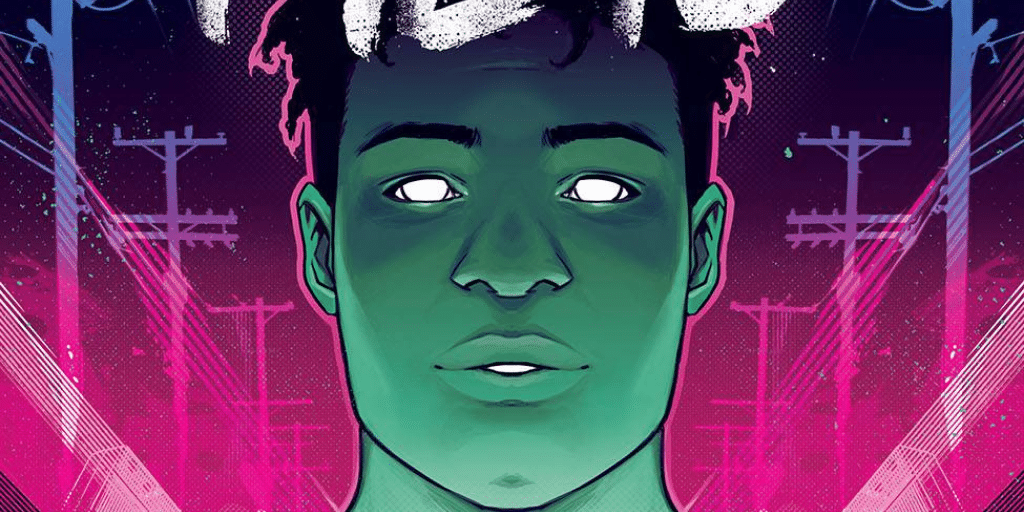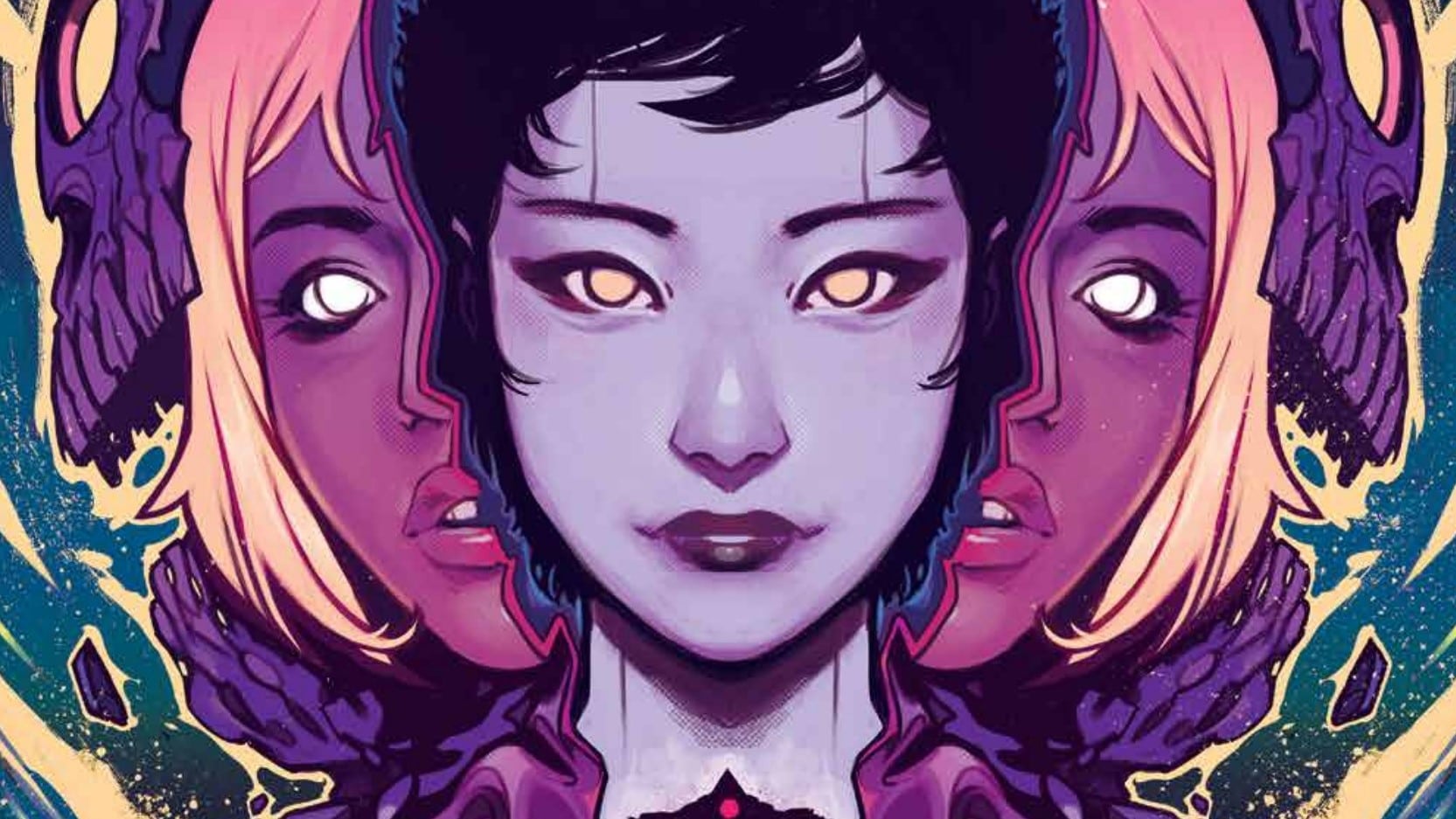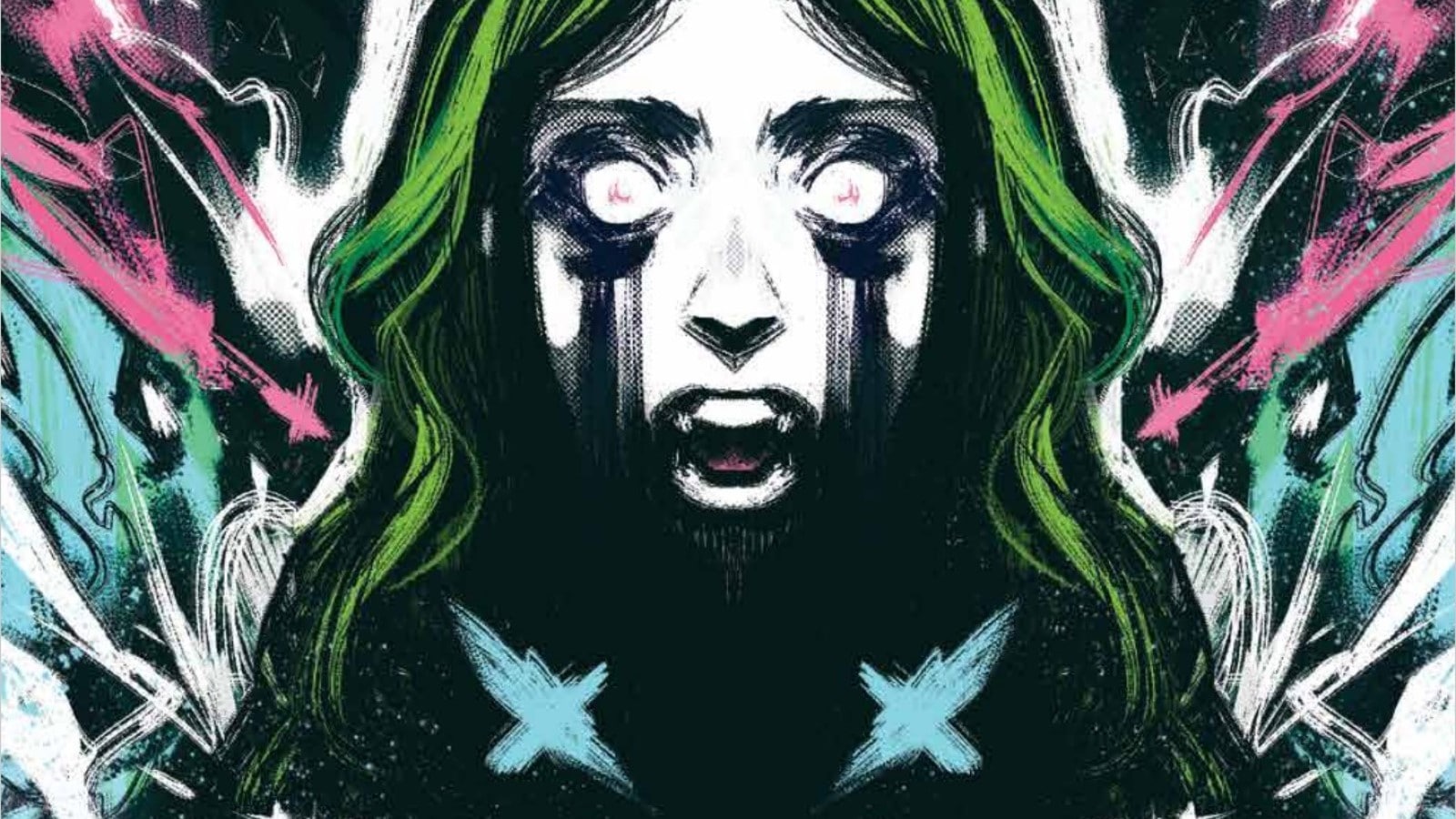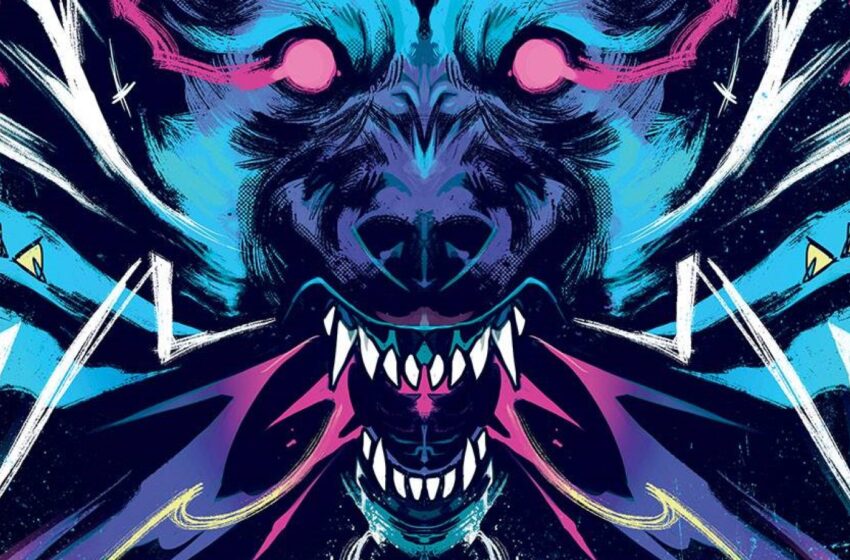The rest of the Home Sick Pilots continue their search for Ami through the Old James House. But the house doesn’t want them to find her … and is now full of very angry, restless spirits. Will the Pilots live to cover “Blitzkrieg Bop” another day? Wait, I thought Buzz said the Ramones suck. Let’s clear to land Image Comics’ Home Sick Pilots #3 by Dan Watters, Caspar Wijngaard, Aditya Bidikar and Tom Muller.
Dan Grote: Oi! Oi! What’s all this, then? We’re reviewing another issue of Home Sick Pilots, we are!
Hi, it’s your favorite street punk, Dan Grote. And when I’m not God-saving the queen or London calling with me mates, I’m doing the punkest thing of all: writing about Home Sick Pilots with Forrest Hollingsworth. And Forrest, I hear you’ve got a fun, new little thing to promote here at the top.
Forrest Hollingsworth: I’m not sure how punk newsletters are, but at least the name of my new bi-weekly one, ATOMIC CASKET, is! The first column, a deeply personal exploration of Morrowind, dead friends, nostalgia, manga and chores, is live now, and I would love it if everyone here took a look. I don’t have a picture of the billboard I purchased yet, but I do have a link: https://atomiccasket.substack.com/.
DG: I’ve already subscribed! I love peering into other people’s brain meat. Anyway, let’s peer into the brain meat that is this comic.
‘I Don’t Want to Walk through Walls’
DG: So after creepy horseshoe-head guy told Ami last time she had six more ghosts to collect, I thought this book was going to be more of a fetch quest, where each issue she encounters another ghost and fights it while her fellow Pilots get more and more involved in the A(mi) plot. Turns out she does most of that work off panel, and this issue is more about how the house has changed her, how she feels like she’s slipping away from her friends and vice versa, and how Buzz continues to look for her but is being kept away by the house.
All of that is to say, the teenage depression metaphor hangs heavy over this issue. Forrest, how do you feel this issue handles that subject?
FH: You know, you’re right that the issue trades in emotional intensity and obliqueness much more than it does in sentai-esque traipsing, but I think it’s better for it. As you indicated, the narrative thrust here is Ami’s relative weightlessness and listlessness. She’s on what you would think is a fantastical adventure, a worthy quest to honor and restore the time and artifacts of old.
But we don’t see that, we see her lingering like a ghost around the periphery. She’s drifting through the foundational moments and times of her life — even against her own wishes as the text above indicates. What if you could never touch the things you love? What if some supernatural force or possession was robbing you of feeling? It’s emotionally devastating, especially if you’ve been in that state before, but it’s also much … realer than a series of supernatural fights might be. I think it’s worth celebrating the kind of gambit that Watters and Wijngaard have taken with the direction here — imply one thing, do another, as if some fantastical force was pulling the rug out from under us and Ami herself, the colors a dreamlike twilight.
‘Street Punks Are the Worst’
DG: OK, I love the street punks Watters and Wijngaard introduce here and Watters’ explanation of what they are: These British-scene appropriating ne’er-do-wells who hang out under the bridge, spike their hair impossibly high and wear studded leather jackets like it’s still London in 1982. There’s a photo Watters posted on Twitter in the fall where he looks exactly like that. Watters clearly was part of “the scene” growing up, and that puts him in a unique position to lampoon his fellow punks.
In a lot of ways, these punks are not unlike the gatekeepers you hear about in the worst comic shop stories. They hate everything, they’ll constantly test your knowledge and ultimately they don’t want you to have it because it’s theirs. Street punks dress cooler, though.
(To be clear, plenty of comic shop folk are great. As are plenty of punks.)
Forrest, what’s your favorite kind of punk?
FH: My brothers-in-law! I had the fortune of marrying into a cool family, and my wife’s brothers are just about the coolest kind of punks you can meet — the neck and knuckle tattoos and black denim and cool T-shirts without all the emotional unavailability or toxic masculinity. In fact, you can and should listen to their band, The Damage Done, here.
Speaking of other punks, and less savory ones at that, I have to put in a word for the verbal fixation here. If there’s one issue I’ve had with Pilots to date, it’s that the way Watters writes some interactions makes it glaringly obvious that he’s not American. Not a bad thing at all, but one that does make some of the dialogue sound as if it came from Britain via a Google Translate targeted at “Californian.” The inclusion of the street punks with all their “oi”s and “wots” and “innits” here almost feels tongue-in-cheek intentional, and I can appreciate that.
Dan, I need you to tell me your thoughts on denim and hair dyes immediately.
DG: I went to high school during the rise (and fall) of the third ska wave, which was a largely fashion-accessible era of punk, probably because of how much it had been suburbanized at that point. That said, I could never pull off a pair of Jnco jeans, let alone do that thing where you add the extra fabric to widen the legs even more. I DID peroxide my hair blond once. Once.
‘She Needs to Be Lucky’
DG: The book’s third act lets Wijngaard go HAM on that good, good neon horror shit, as we learn more about the James House, the cursed objects it seeks to reclaim and the acts the house’s ghosts have committed. In addition to horseshoe-head, we’re introduced to a fridge that keeps a vivisected glutton on ice, a murderous Gundam, an athletic-wear sporting lamp that shows you how you’re going to die and, perhaps the scariest, a monster made of VHS tape. Forrest, what’s your favorite of these visuals?
FH: I do have to say that I like the horseshoe ghost’s feel for the dramatic, appearing right as Buzz mentions horse trading, but of all of these I would have to say the lamp. There’s something about the period-accurate clothing, the stance, the sheer mundanity of the lamp that unsettles me, the idea of the most basic things upending your life.
I’ve also got to give a compliment to the design elements immediately after the ghosts’ reveal here, as the autobiographical narration on the corresponding page, set against that same black, scratchy, grainy, background, crosses the bisecting vertical line, almost indicative of someone — Buzz or Ami — crossing the threshold.
DG: Finally, horseshoe-head transforms Buzz into the same horseshoe-rock monster we saw the former actress transformed into last issue. So I guess this is Buzz’s induction into the ghost Power Rangers. Is this a good thing or a bad thing? On one hand, Ami gets a friend who understands what she’s been going through. On the other, they’re both supernatural-ish beings who are no doubt going to have to unpack a lot of trauma when this is all over. Thoughts?
FH: It’s the weight of it all, isn’t it? We paint the world in our image, but we also reflect it. In showing genuine care and concern for each other, Buzz and Ami have found themselves lost in something much larger. A terrifying, eclipsing thought … that I can’t wait to see more of. Sorry, guys!
Cool Miscellany, Bro
- When does Ami have time for hair and wardrobe changes as a ghost?
- They keep bringing back the blond cop with the mustache, and I’m starting to worry he might be important to the plot.
- Feels like they’re hinting at bringing the Nuclear Bastards back into the picture. #MegWatch
- Buzz finally learns to use the window in the kitchen to enter the James House.
- The gears coming out of the video store’s ghost being parallel to an Alien 3 poster almost certainly isn’t a reference to the superior assembly cut of that film, but I’m going to count it nonetheless.







